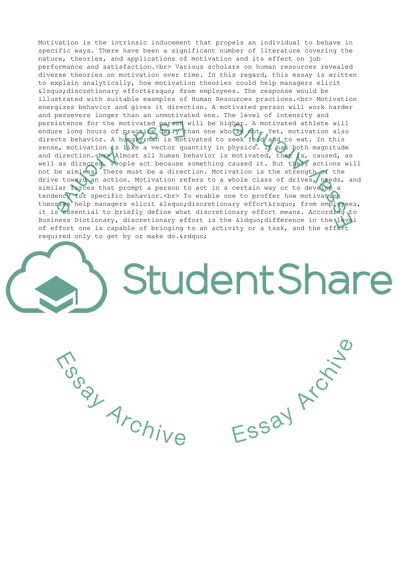Cite this document
(Motivational Theories and Their Critical Role for Employees Research Paper, n.d.)
Motivational Theories and Their Critical Role for Employees Research Paper. Retrieved from https://studentshare.org/management/1732000-explain-analytically-how-motivation-theories-could-help-managers-elicit-discretionary-effort-from-employees-illustrate-your-answer-with-suitable-examples-of-hr-practices
Motivational Theories and Their Critical Role for Employees Research Paper. Retrieved from https://studentshare.org/management/1732000-explain-analytically-how-motivation-theories-could-help-managers-elicit-discretionary-effort-from-employees-illustrate-your-answer-with-suitable-examples-of-hr-practices
(Motivational Theories and Their Critical Role for Employees Research Paper)
Motivational Theories and Their Critical Role for Employees Research Paper. https://studentshare.org/management/1732000-explain-analytically-how-motivation-theories-could-help-managers-elicit-discretionary-effort-from-employees-illustrate-your-answer-with-suitable-examples-of-hr-practices.
Motivational Theories and Their Critical Role for Employees Research Paper. https://studentshare.org/management/1732000-explain-analytically-how-motivation-theories-could-help-managers-elicit-discretionary-effort-from-employees-illustrate-your-answer-with-suitable-examples-of-hr-practices.
“Motivational Theories and Their Critical Role for Employees Research Paper”, n.d. https://studentshare.org/management/1732000-explain-analytically-how-motivation-theories-could-help-managers-elicit-discretionary-effort-from-employees-illustrate-your-answer-with-suitable-examples-of-hr-practices.


